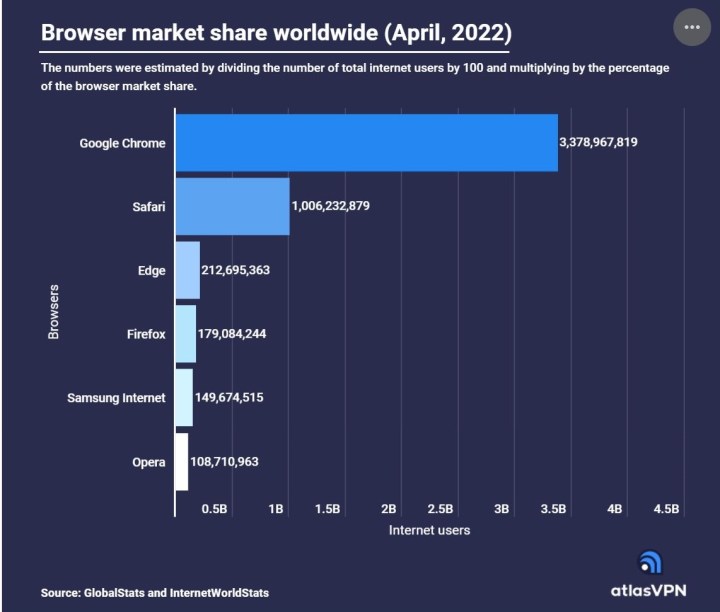Apple’s Safari browser is now serving over 1 billion people, according to a study by Atlas VPN, a first for the company.
Despite the admirable milestone, the browser still lags significantly behind Google Chrome, which remains the top dog in terms of web browser usage. However, this study claims that Safari strongly holds the second-place spot with 1,006,232,879 users, which is 19.16% of all internet users, Atlas VPN notes. Meanwhile, Google Chrome has 3,378,967,819 of all internet users, and Microsoft Edge is in third with 212,695,000 users.

The study also noted that Safari coming preinstalled on all Apple devices, including iPhones and Mac computers, contributed to it reaching the 1 billion-plus users milestone.
Meanwhile, Google has carried favor with users through its applications and services, such as YouTube, Drive, Calendar, Docs, Earth, and Maps, which work best on its Chrome browser. Google suggests users install Chrome when they use these products for a better user experience.
Apple has struggled with the reception of its browser over the years. The brand introduced a revamp of Safari for iOS 15 at WWDC in 2021, unveiling easier navigation and updated privacy controls for the browser.
In February 2022, Apple evangelists heard harsh truths about what users thought of the new Safari browser. Many complained about frequent bugs, inconsistent user experience, and website incompatibility despite the Safari 15 redesign. Apple ultimately defaulted back to a more conventional layout, making made the redesigned elements only an alternative.
But 9to5Mac expects Apple to address privacy features once again on Safari with iOS 16 at the upcoming WWDC, which takes place from June 6 to June 10.
Safari isn’t the only browser struggling for recognition against the behemoth that is Google Chrome. Mozilla Firefox recently observed its 100th version update in early May; however, it stands as the fourth-most-used web browser on the internet, according to data from Statcounter. It is also in fourth place among Atlas VPN research with 179,084,244 users.
Firefox is known for introducing many now-common browser features, such as improved picture-in-picture mode, subtitles and captions, wallpapers for mobile users, and an HTTPS-first setting, according to TechRadar.


